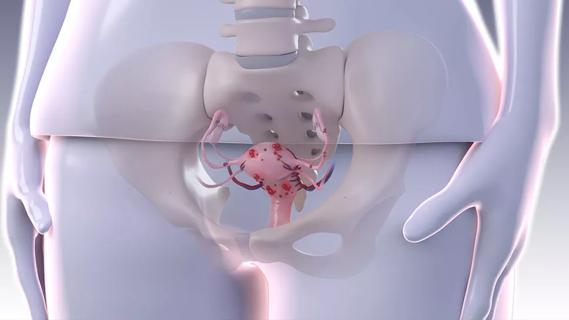Studying trends of conization with lymph node evaluation, trachelectomy and radical hysterectomy

More than one-third of patients with uterine cervical cancer are of reproductive age at diagnosis, and many will be cured with surgery alone. That has led to an increase in less radical surgical options.
Advertisement
Cleveland Clinic is a non-profit academic medical center. Advertising on our site helps support our mission. We do not endorse non-Cleveland Clinic products or services. Policy
“Finding a surgical procedure for patients with early-stage cervical cancer that is an effective oncological treatment but also allows them the ability to maintain a pregnancy in the future has garnered a lot of interest from practitioners and patients,” says Michelle Kuznicki, MD, a gynecologic oncologist at Cleveland Clinic.
Guidelines for treatment of cervical cancer released by the National Comprehensive Cancer Network® include cervical conization with lymph node evaluation (Cone-LN) as a standard therapy for patients with early-stage disease whose priority is to maintain fertility. A hysterectomy is typically recommended for patients who don’t want to preserve fertility. Kuznicki co-authored a recent study published in Gynecologic Oncology that examines uptake, characteristics and survival outcomes of fertility-sparing surgery with Cone-LN in reproductive-age patients with early-stage cervical cancer.
Dr. Kuznicki and colleagues from the University of Southern California, University of Freiburg Faculty of Medicine, and Columbia University College of Physicians and Surgeons conducted a retrospective cohort study of the National Cancer Institute’s Surveillance, Epidemiology and End Results (SEER) Program. They examined data from 407 patients under age 50 who had stage 1A to stage 1B2 (≤4 cm) cervical cancer and underwent Cone-LN or trachelectomy with lymph node evaluation from 2004 to 2019.
The conization procedure entails a large biopsy of the cervix, including the ectocervix and part of the endocervical canal, to remove abnormalities. The more extensive radical trachelectomy removes the entire cervix, including some of the parametrial tissue.
Advertisement
“We wanted to see how often these two procedures are being performed compared to each other and compared to hysterectomy, as well as how often sentinel lymph node sampling is being done in combination with these procedures,” says Dr. Kuznicki.
A secondary outcome was overall survival.
“The recurrence risk for these types of tumors either with fertility-sparing procedures or hysterectomy is low – 2% or less,” says Dr. Kuznicki. “Overall survival is very good, so this outcome was more exploratory in nature.”
The data demonstrated a gradual increase in the number of patients undergoing Cone-LN, particularly with sentinel lymph node biopsy. Survival outcomes following Cone-LN or trachelectomy with lymph node evaluation were excellent.
“Survival data was very similar to other retrospective reports on early-stage cervical cancer treatments, so these fertility-sparing procedures seem to be a safe option for the right patient,” says Dr. Kuznicki.
Dr. Kuznicki stresses that prospective, randomized trials are warranted to determine if fertility-sparing procedures are safe and effective. Two such trials – the SHAPE Trial and the GOG 278 trial – are underway.
In the meantime, she says that publishing retrospective studies has value in spreading the word about fertility-sparing procedures included in the National Comprehensive Care Network’s guidelines.
“There are some providers who aren’t comfortable offering these procedures to patients because of anecdotal experiences. Retrospective studies such as ours help improve understanding of cervical conization with lymph node evaluation,” says Dr. Kuznicki. “This is an extremely important issue for young patients with a good prognosis who want options to preserve their fertility.”
Advertisement
Advertisement

Kits for use in healthcare settings can increase uptake

A new analysis emphasizes the value of a multi-disciplinary approach.

Growing need for addressing fertility concerns

Counseling and careful surgical considerations are key

Options expand for patients with cancer and other conditions

San Antonio Breast Cancer Symposium presentations underscore safety of assisted reproductive technology and pregnancy in women during and after breast cancer treatment

Mental health colleagues can provide much-needed perspective

ACOG-informed guidance considers mothers and babies